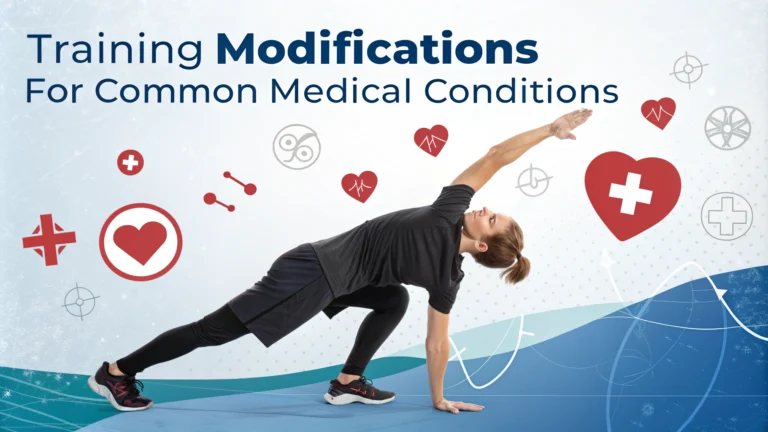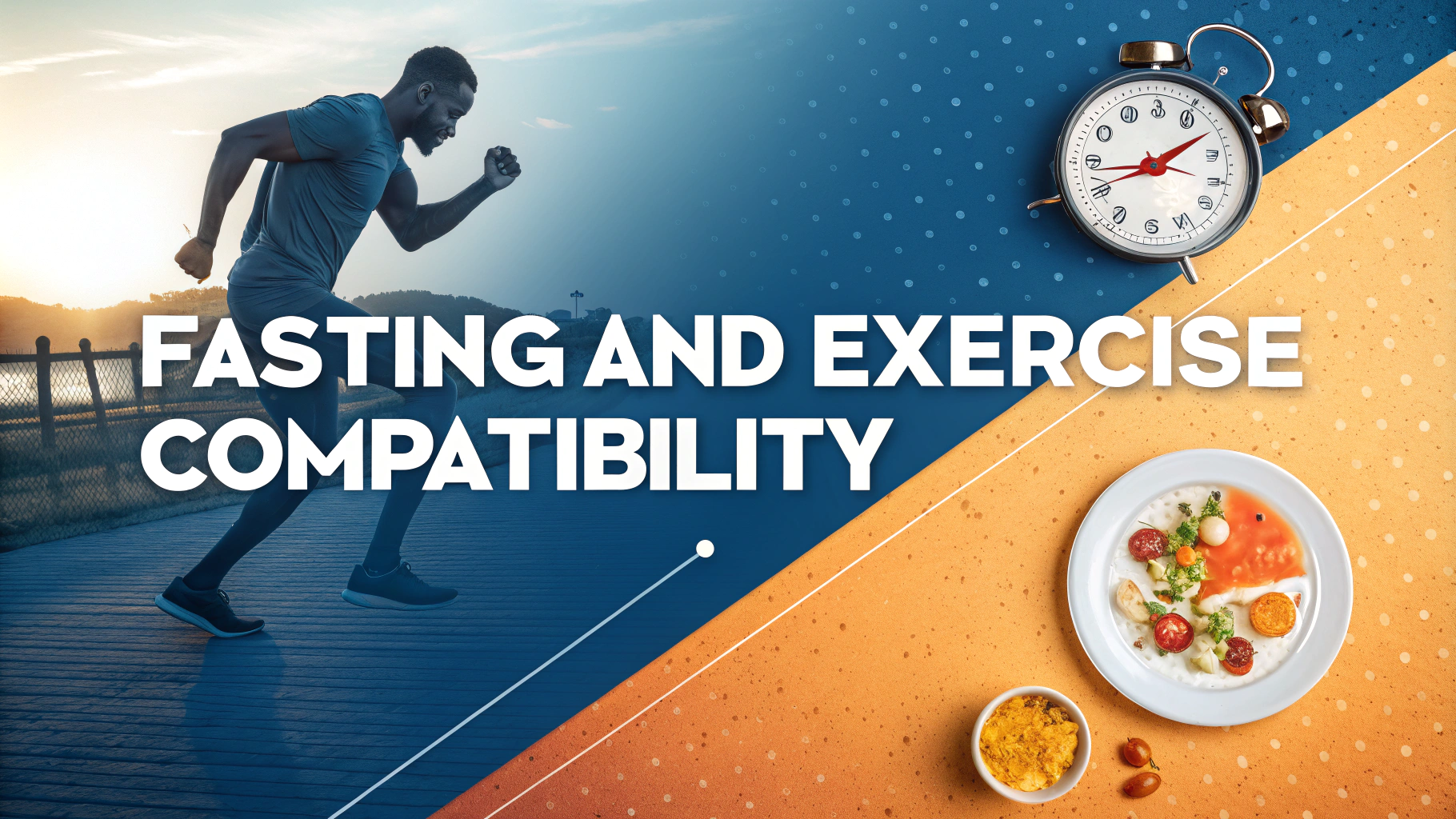Adapting exercise routines for medical conditions requires careful planning and professional guidance to ensure safe, effective workouts.
Heart Conditions
People with heart conditions should focus on low-to-moderate intensity cardio exercises cleared by their cardiologist.
- Start with 5-10 minute sessions
- Monitor heart rate closely
- Watch for chest pain or shortness of breath
- Avoid high-intensity activities
Arthritis
Exercise modifications for arthritis focus on joint protection while maintaining mobility.
- Choose low-impact activities like swimming or cycling
- Use resistance bands instead of heavy weights
- Exercise during times when joint pain is minimal
- Apply heat before and ice after workouts
Diabetes
Exercise timing and intensity should align with blood sugar management.
- Check blood sugar before, during, and after exercise
- Keep fast-acting carbs nearby
- Work out with a partner when possible
- Schedule exercise for consistent times daily
Back Pain
Focus on core-strengthening exercises while avoiding movements that cause pain.
- Start with gentle stretching
- Practice proper posture during all exercises
- Avoid high-impact movements
- Include water exercises when possible
Asthma
Exercise modifications should prevent triggering asthma symptoms while building endurance.
- Always warm up thoroughly
- Keep rescue inhaler nearby
- Exercise indoors during high pollen days
- Use interval training to manage exertion
Safety Guidelines
Always consult healthcare providers before starting any new exercise program.
- Start slowly and progress gradually
- Stop if experiencing unusual pain or discomfort
- Keep emergency contacts readily available
- Document exercise tolerance and symptoms
Emergency Contact Information: Call 911 or your local emergency number if you experience severe pain, difficulty breathing, chest pain, or unusual symptoms during exercise.
| Condition | Recommended Activities | Activities to Avoid |
|---|---|---|
| Heart Conditions | Walking, light swimming | Heavy weightlifting, sprinting |
| Arthritis | Water aerobics, tai chi | High-impact sports, heavy weights |
| Diabetes | Regular cardio, resistance training | Long-duration intense exercise alone |
Osteoporosis
Exercise for osteoporosis patients should focus on bone strengthening while preventing fractures.
- Include weight-bearing exercises
- Practice balance training
- Avoid movements with high fall risk
- Strengthen core and postural muscles
Multiple Sclerosis
Exercise adaptations should consider temperature sensitivity and fatigue management.
- Exercise in cool environments
- Plan rest periods between activities
- Focus on flexibility and balance
- Monitor energy levels throughout
Post-Surgery
Recovery exercises must follow surgical team guidelines and progress gradually.
- Begin with approved rehabilitation exercises
- Monitor incision sites during movement
- Follow specific range-of-motion restrictions
- Report any unusual pain or swelling
Conclusion
Successful exercise adaptation requires:
- Regular communication with healthcare providers
- Consistent monitoring of symptoms and progress
- Flexibility in adjusting routines as needed
- Understanding personal limitations and warning signs
| Condition | Recommended Activities | Activities to Avoid |
|---|---|---|
| Osteoporosis | Walking, light resistance training | High-impact jumping, contact sports |
| Multiple Sclerosis | Swimming, seated exercises | Hot yoga, endurance sports |
| Post-Surgery | Physical therapy exercises | Activity-specific restrictions |
FAQs
- How should I modify my workout routine if I have high blood pressure?
Focus on moderate-intensity activities, avoid heavy lifting that causes strain, incorporate more cardio exercises, and monitor your heart rate. Take frequent breaks and stay well-hydrated. - What exercise modifications are recommended for those with Type 2 Diabetes?
Check blood sugar before and after exercise, carry fast-acting carbohydrates, wear proper footwear, start with low-impact activities, and exercise with a partner when possible. - How should arthritis patients adapt their fitness routine?
Choose low-impact exercises like swimming or cycling, focus on range-of-motion exercises, avoid exercises during flare-ups, and use heat therapy before workouts and cold therapy after. - What precautions should asthmatic individuals take during exercise?
Use prescribed inhaler before exercise, warm up properly, avoid cold-weather outdoor exercise, monitor breathing rate, and gradually increase intensity levels. - How should someone with osteoporosis modify their strength training?
Avoid exercises that flex or twist the spine, focus on weight-bearing exercises, maintain proper posture, use resistance bands instead of heavy weights, and include balance training. - What exercise adjustments are needed for heart disease patients?
Start with supervised exercise programs, maintain moderate intensity, avoid high-altitude activities, stop if experiencing chest pain, and regularly monitor heart rate and blood pressure. - How should obesity affect exercise selection and intensity?
Begin with low-impact activities like walking or water exercises, focus on gradual progression, incorporate resistance training, and protect joints by avoiding high-impact movements. - What modifications are necessary for those with chronic back pain?
Focus on core strengthening exercises, avoid heavy lifting, maintain proper form, include stretching routines, and stop any exercise that increases pain. - How should pregnant women modify their existing workout routines?
Avoid exercises lying flat on back after first trimester, reduce intensity, avoid contact sports, maintain proper hydration, and stop if experiencing any pain or discomfort. - What exercise considerations are important for individuals with fibromyalgia?
Start with gentle exercises, focus on flexibility and stretching, exercise during energy peaks, include relaxation techniques, and avoid overexertion.







